Your Backyard Wildlife Habitat: Join in the Christmas Bird Count
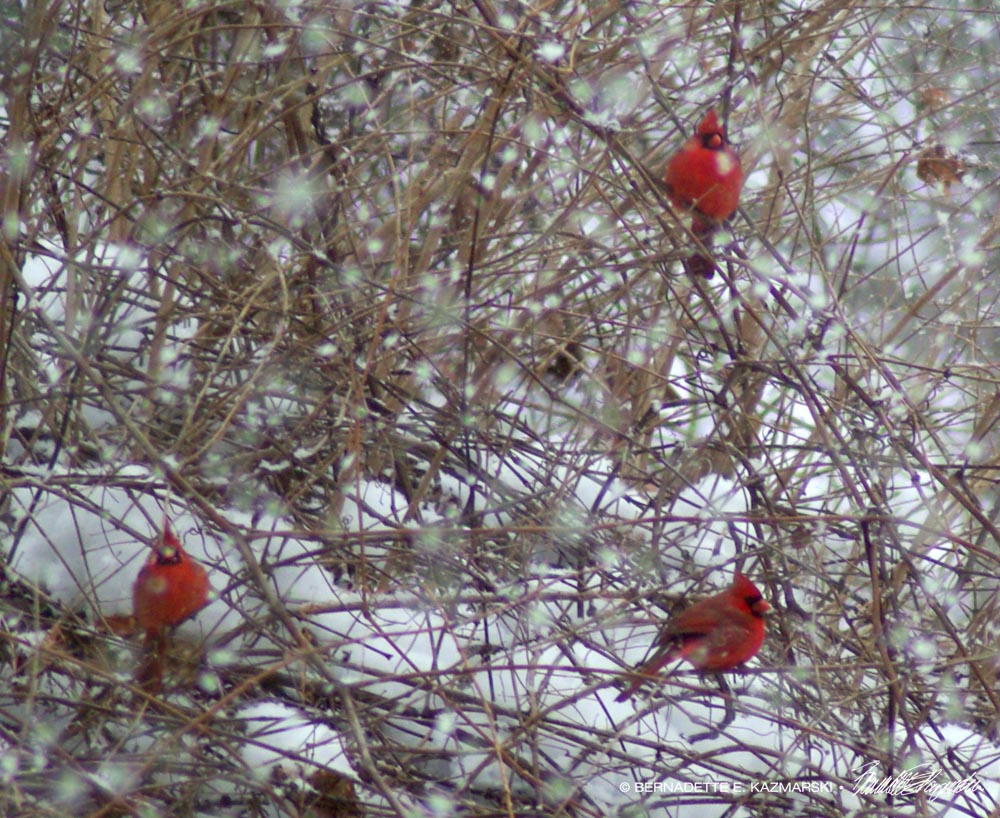
AS PART OF maintaining our Backyard Wildlife Habitats we widen our scope to the urban, suburban and rural areas around us to count birds as part of another citizen-science project. The Christmas Bird Count was initiated in 1900 in response to an annual sporting hunt that slaughtered game birds and songbirds alike as well as species of animals just to see who could kill the most wild animals. These bird counts are where scientists derive much of their data, so it’s important to participate if possible. All photos in this article are mine, taken in my yard or in the woods and streams I visit regularly in all seasons.
. . . . . . .
The 116th Christmas Bird Count
December 14, 2015 through January 5, 2016
The count period runs from December 14 to January 5 every year
An annual tradition like the Great Backyard Bird Count, the Christmas Bird count is a “citizen science project” that scientists rely on for data! And if, as I am, you are concerned about all the articles citing declining songbird species and putting the blame on cats in general, especially stray and feral cats, this is one of the most important ways the numbers of bird species are counted, by citizen scientists who get involved and report their data—so register to participate and count your birds!
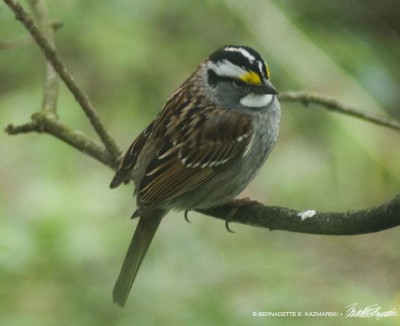
This annual bird count is one of the data-gathering efforts used to count bird populations and trend changes, and was founded in 1900 as a response to a Christmas Day hunting tradition that might have been better called a slaughter. Groups of hunters would divide up and choose sides, then go out and kill just about anything they saw with fur or feathers, bringing it back and piling it up, with the biggest pile the winner. Results of this “side hunt” were published in the magazines of the day. The fact that many people still relied on hunting for some or all the meat in their diet, yet they or others would waste it in such a cruel spectacle might tell us today how full the woods and fields were of animals and birds just over 100 years ago.
But the concept of “conservation” was developing around the turn of the 20th century in part because of the decline of populations of wild creatures, especially birds. Ornithologist Frank Chapman, an early officer in the nascent Audubon Society of the day, proposed a new holiday tradition—a “Christmas Bird Census”—that would count birds over the holidays rather than hunt them. You can read about the origins here, including links to the original articles about the effects of the “side hunt” and the concept of people counting birds for scientists.
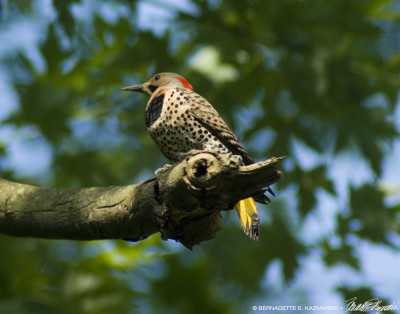
Now, over a century later, the Christmas Bird Count is still done in much the same way: a circle 15 miles in diameter is marked off and a “compiler” designated who organizes a team of counters and at least one skilled birder who can train the team. Birders count for most of a day to ensure they’ve covered the entire circle. It’s not actually done on Christmas Day, but somewhere between December 14 and January 5. If your back yard is in a count circle, you may not even have to leave home, but you need to count in a designated area for this event.
I can see from the number of people who reference my articles on backyard wildlife, backyard birds and bird feeding that many people maintain bird feeding stations of all sorts and enjoy watching, photographing and identifying the birds that visit their yard, neighborhood or favorite outdoor area.
I truly enjoy sharing my enthusiasm for the lives and welfare of these special little residents of our yards and neighborhoods, and I might also add I’m eternally grateful for the work they do in my back yard and elsewhere in constant and vigilant pest control—and in keeping generations of cats amused and active so long as I keep the bird feeders full. I’ve included photos of bird species common to most of the USA and Canada, and see also It’s the Great Backyard Bird Count! for more photos.
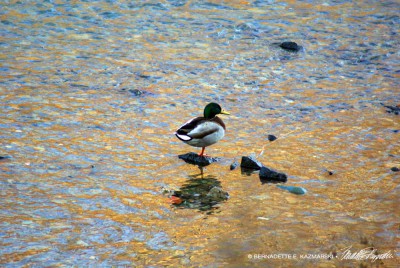
Keeping the timing consistent helps to obtain data that’s easily compared from one observation to the next over the period of time you are observing. For this event, it’s one day, though you can count in many different areas if you want over the three weeks when people are counting. For the Great Backyard Bird Count it’s over four days, and for Project Feederwatch it’s for an entire season, November to April. Limiting the amount of time you watch helps to ensure you’re not counting the same birds over and over in one counting period.
Don’t know your species, don’t worry
At least one member of your circle will be able to help you identify birds, and partly all you are doing is counting how many birds you see, not necessarily how many of each species. For instance, if you only know what a blue jay looks like, you give your count for the total number of blue jays, and also note that other birds were present but which you could not identify. All the data is gathered and segmented off into the area it can best be used taking into account your additional descriptive information.
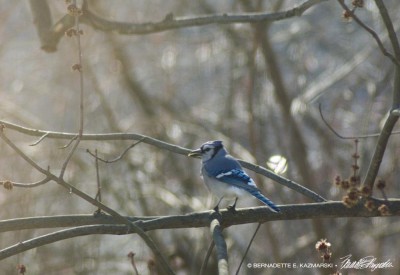
Like to get to know your birds better?
I grew up knowing maybe four bird species well enough to recognize them when I saw them. But later, walking a trail in the woods, sitting in an abandoned pasture, hearing the birds sing as they flew about I felt as if I was a visitor to a land where the natives were friendly but I couldn’t speak the language.
So I got Peterson’s Guide to the Birds of North America, and set about focusing on individual birds and flipping through the images to see what they were, then reading the descriptive copy for more details. It started out very tediously, but in a surprisingly short time I had gotten to know my local birds well enough and gotten to know my book well enough that matching the bird with the image and learning the details became as easy as finding a word in a dictionary, and suddenly I could speak their language and no longer felt like a visitor to my beloved woods and fields.
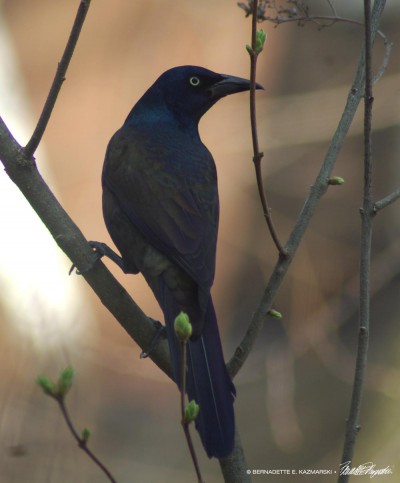
I have several other identification books in addition to Peterson’s, but I purchased that one first because it seemed to be what everyone used and I also found it was referred to in articles about birds. It uses careful illustrations of birds, and while there are many guides that use photographs the illustrations are often much more clear in learning species identification. Getting one bird to pose for a photo at the right angle in the right light at the best distance to get clear details for a photo is nearly impossible—trust me! Trying to get all the birds in a book in the same way is a heroic quest.
A skilled illustrator will choose the pose and posture most universally identifiable for a species so that no matter what season or time of day you see your bird, even if all you see is a silhouette and vague color bands on the wings for instance, you’ll be able to piece together the details and identify your bird.
In addition, the big three organizations mentioned above offer LOTS of information for regional bird identification on their websites and for download including illustrations, photos, posters, videos, recordings of bird calls, descriptions of nests and anything else you might need to correctly identify your chosen bird. The more information they offer, the more accurate your reports will be.
Don’t worry, be happy!
Don’t be intimidated by what others know or what you don’t know, and don’t be impatient that you can’t tell a song sparrow from a chipping sparrow. We all started somewhere, and all of us who watch birds are somewhere along the spectrum from knowing, maybe, four birds to being able to identify by one note of a song.
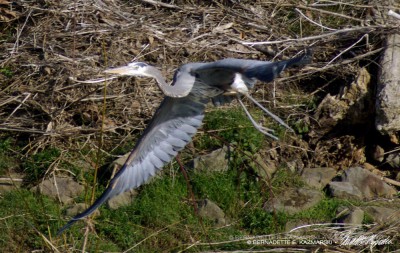
Links
Cornell University Lab of Ornithology
Resources
In addition to those listed below, find your local chapter of the Audubon Society or other outdoor organization such as the Sierra Club or National Wildlife Federation. Many animal shelters also have a wildlife rehabilitation program and carry information. In addition, most communities or regions have local environmental organizations that offer information and sponsor guided bird walks, and also participate in the bird counts as a group.
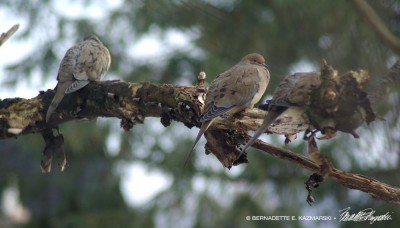
Links around Pittsburgh, PA
These aren’t the only organizations around, but they are the ones I’ve used as a resource and many can be used to find chapter closer to where you live if you’re not in Western Pennsylvania.
Audubon Society of Western Pennsylvania
Sierra Club, Pennsylvania Chapter, Allegheny Group
The Wildlife Rehabilitation Center of the Animal Rescue League of Western Pennsylvania
Regional Environmental Education Center/The Outdoor Classroom
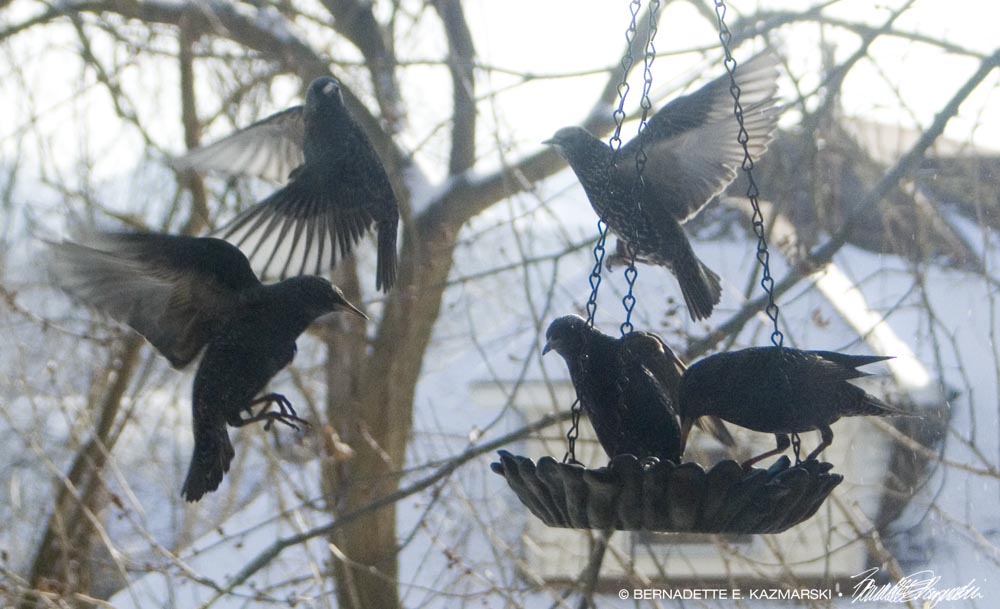
Read other articles in “Your Backyard Wildlife Habitat”
All images used on this site are copyrighted to Bernadette E. Kazmarski unless otherwise noted and may not be used without my written permission. Please ask if you are interested in using one in a print or internet publication. If you are interested in purchasing a print of this image or a product including this image, check my Etsy shop to see if I have it available already. If you don’t find it there, visit Ordering Custom Artwork for more information on a custom greeting card, print or other item.
Do you appreciate the stories and images we offer you each day?
© 2015 | www.TheCreativeCat.net | Published by Bernadette E. Kazmarski
—
Weekly schedule of features:
Sunday: Essays, Pet Loss, Poetry, The Artist’s Life
Monday: Adoptable Cats, TNR & Shelters
Tuesday: Rescue Stories
Wednesday: Commissioned Portrait or Featured Artwork
Thursday: New Merchandise
Friday: Book Review, Health and Welfare, Advocacy
Saturday: Your Backyard Wildlife Habitat, Living Green With Pets, Creating With Cats
And sometimes, I just throw my hands in the air and have fun!
—


